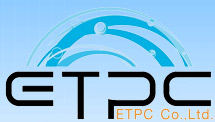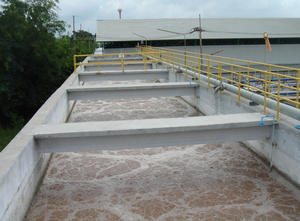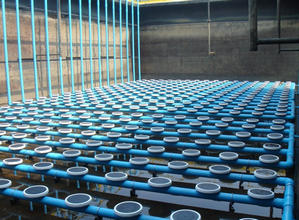Wastewater Treatment
ระบบบำบัดน้ำเสีย ระบบกำจัดไขมัน และน้ำมัน ระบบบำบัดน้ำเสียด้วยวิธีทางเคมี (Chemical Treatment System) ระบบบำบัดน้ำเสียด้วยวิธีทางชีวภาพ (Biological Treatment System)
Activated Sludge Process
The activated sludge process (ASP) was developed in England in 1914 and was so named because it involved the production of an activated mass of microorganisms capable of aerobically stabilizing the organic content of a waste. ASP is the most versatile of the biological treatment processes capable of producing an effluent with any desired BOD. The ASP is an aerobic biological waste water treatment process that uses microorganisms, including bacteria, fungi, and protozoa, to speed up decomposition of organic matter requiring oxygen for treatment. In this process, microorganisms are thoroughly mixed with organics under conditions that stimulate their growth and waste materials are removed. As the microorganisms grow and are mixed by the agitation of the air, the individual microorganisms clump (or flocculate) together to form a mass of microbes called activated sludge.
The generation of activated sludge or flocculant in waste water is a slow process and the amount so formed from any volume of waste water during its period of treatment is small and inadequate for the rapid and effective treatment of the waste water which requires large concentrations of activated sludge. Such concentrations are built up by collecting the sludge produced from each volume of wastewater treated and re-using it in the treatment of subsequent waste water flows. The sludge so re-used is known as returned sludge. This is a cumulative process so that eventually more sludge has been produced and is available to maintain a viable biological population of organisms to treat the incoming wastes.
In the ASP, waste water flows continuously into an aeration tank where air is injected into the waste water to mix the waste water with the activated sludge, and also to provide the oxygen needed for the microorganisms to break down the organic pollutants. The mixture of waste water and activated sludge is called mixed liquor. The mixed liquor flows to a secondary clarifier or secondary settling tank (SST) where the activated sludge settles out. A portion of the settled sludge is returned to the aeration tank (and hence is called return sludge) to maintain an optimum concentration of acclimated microorganisms in the aeration tank to break down the organics. Since more activated sludge is produced than is needed for return sludge, the excess sludge is discarded or “wasted.” The wasted sludge may be further treated in a sludge digester and dewatered on sludge drying beds prior to disposal. The clarified effluent from the SST is discharged on land or into a flowing river.
The ASP, consists of the following steps;
Mixing the activated sludge with the wastewater to be treated (mixed liquor),
Aeration and agitation of this mixed liquor for the required length of time,
Separation of the activated sludge from the mixed liquor, in the final clarification process,
Return the proper amount of activated sludge for mixing with the wastewater, and Disposal of the excess activated sludge.





